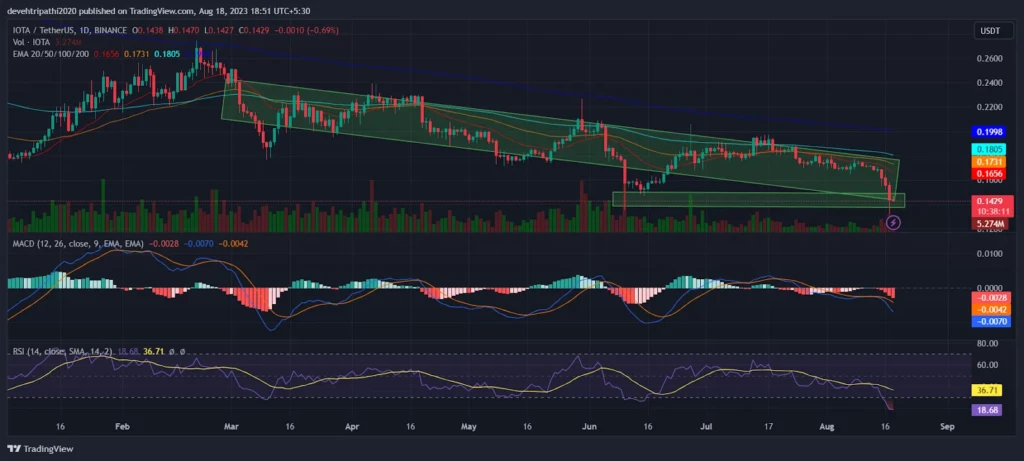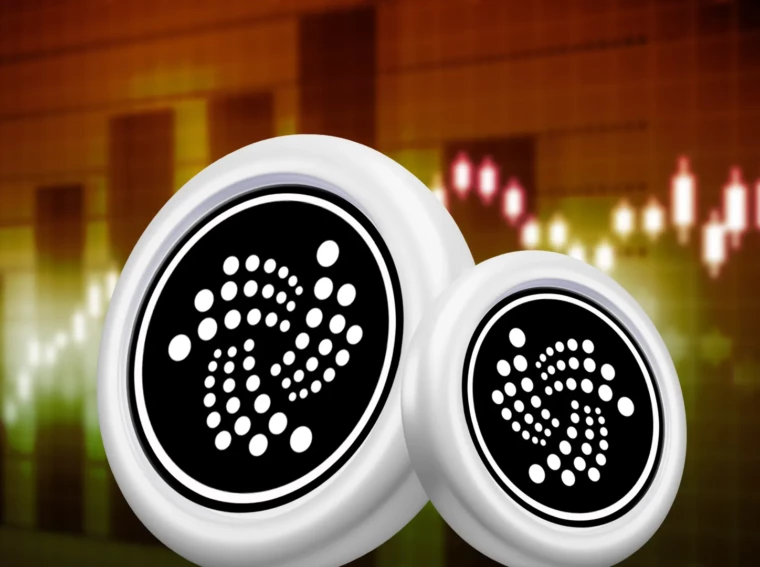MIOTA is a cryptocurrency and open-source distributed ledger created specifically for the Internet of Things (IoT). In order to potentially scale more effectively than distributed ledgers based on blockchain, it uses a directed acyclic graph to store transactions on its ledger. In IOTA, nodes that issue new transactions on the network must first approve two older transactions, as opposed to using miners to validate transactions.
As a result, transactions can be issued without cost, enabling microtransactions. As of [date], the network reaches consensus using a coordinator node run by the IOTA Foundation. The network is currently centralized since the coordinator is a single point of failure.
It’s interesting to note that the platform positions itself as the IoT’s backbone, acting as a network with tamper-proof data, fee-free micropayments, and minimal resource requirements. By enabling straightforward machine-to-machine transactions and connecting the human and machine economies, IOTA seeks to establish a “machine economy.”
IOTA price action of previous days
IOTA’s current price is $ 0.143262, with a 24-hour trading volume of $ 27.30M, a market capitalization of $ 398.20M, and a market domination of 0.04%. MIOTA’s price has dropped -7.84% in the last 24 hours.
IOTA had its greatest price on December 6, 2017, when it traded at its all-time high of $ 5.54, while it reached its lowest price on March 13, 2020, when it traded at its all-time low of $ 0.077481. The lowest price since the all-time high was $ 0.077481 (cycle low). Since the last cycle low, the greatest MIOTA price was $ 2.68 (cycle high). The current price forecast sentiment for IOTA is negative, with the Fear & Greed Index reading 37 (Fear).
Will it converge to 0.100 USD
IOTA’s best year was 2017 when the price of MIOTA climbed by 510.05% from 0.590255 to 3.60. The worst year for IOTA was 2018 when the price fell by -90.11% from $ 3.60 to $ 0.356202. IOTA has grown at a rate of 120.18% per year on average over the previous seven years. IOTA typically performs best in Q4 with an average gain of 63.99% and poorest in Q2 with a loss of -11.99%.

According to our technical indicators, IOTA’s 200-day SMA will grow during the next month and reach $0.203341 by September 9, 2023. The short-term 50-day SMA for IOTA is expected to reach $ 0.215222 by September 9, 2023.
Our technical indicators predict that IOTA’s 200-day SMA will decline over the coming month and reach $ 0.194952 on September 17, 2023. By September 17, 2023, IOTA’s 50-day SMA is anticipated to reach $0.0190483.
A well-liked indicator for determining if a cryptocurrency is oversold (below 30) or overbought (over 70) is the Relative Strength Index (RSI) momentum oscillator. The RSI indicator is currently reading 21.05, which means that the MIOTA market is oversold. The RSI indicator predicts a drop in the price of MIOTA.
IOTA has support levels at $ 0.131876, and $ 0.119399, and the strongest is at $ 0.106598, based on the traditional pivot point (P1) for today at $ 0.144677. The resistance levels for IOTA are also $ 0.157154, $ 0.169955, and $ 0.182431.
Our technical indicators predict that IOTA’s 200-day SMA will grow during the coming month and reach $0.203355 by August 9, 2023. By August 9th, 2023, the short-term 50-day SMA for IOTA is predicted to reach $0.0188304.
What does the Fear and Greed Index represent?
The Fear & Greed Index revealed the following about the market’s present mood: extreme fear (0–24), fear (25–49), neutral (50), greed (51–75), and extreme greed (76–100). While a dominantly optimistic emotion can be a good opportunity to sell, other traders view a dominantly negative feeling as a good opportunity to purchase. Various measures, such as price volatility, trading volume, social media mood, and more, are used to generate the Fear and Greed index.
The Support and Resistance Game
IOTA is in a falling trend channel in the medium and long term. Falling trends indicate that the currency experiences negative development and falling buy interest among investors. The currency has met the objective at 0.15 after the break of the head and shoulders formation.
The price has now risen again, but the formation indicates a further fall. The currency is testing resistance at point 0.15. This could give a negative reaction, but an upward breakthrough of points 0.15 means a positive signal.
Conclusion
The currency has strong negative momentum and further decline is indicated. However, particularly in big stocks, a low RSI may be a sign that the stock is oversold and that there is a chance for a reaction.
Technical levels
- Resistance levels: 0.22 and 0.20 USDT
- Support levels: 0.13 USDT
Disclaimer
The views and opinions stated by the author, or any people named in this article, are for informational purposes only. They do not establish financial, investment, or other advice. Investing in or trading crypto assets comes with a risk of financial loss.

